Formed in 2011, First Light Fusion was spun out of the University of Oxford by Dr Nicholas Hawker and Professor Yiannis Ventikos following work Dr Hawker had performed creating hydrodynamic simulations of shock-driven cavity collapse. These simulations showed that cavity collapse leads to inertial confinement of the gas inside the cavity and revealed that extreme states of matter could be reached, possibly creating fusion.
“We had six people at that time and the mission then was to execute an experiment to see if the simulations bore any resemblance to reality – which they did,” explains Dr Hawker. “Better than that, they were predictive which is very difficult – the holy grail of simulations.
“Basically, we measured the projectile velocity and then we simulated the target, looking to see if we were getting the right features in the right places at the right times, which we were. And we did that without having to tweak any fudge factors. So, that was fantastic.”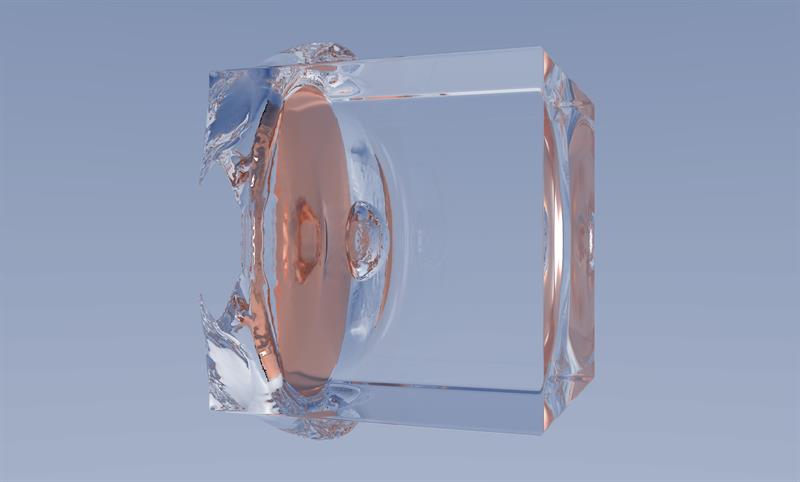
In Dr Hawker’s inertial confinement technique, a projectile is fired at a ‘target’ containing ‘fusion fuel’ (a mix of hydrogen isotopes, deuterium and tritium). The force of the projectile smashing into the target creates a shockwave that crushes the fuel in the target forcing the isotopes to join together creating helium and neutrons that – due to the fact they don’t interact strongly with matter – will stream out in a uniform pulse. For a fraction of a second, this reaction will produce plasma that is hotter than the sun and denser than lead. The materials and shapes of both the projectile and the target are a trade secret. These are the IP of, and hence the profit driver for, First Light Fusion.
This method is much less energy intensive and doesn’t require an expensive tokamak-style reactor, unlike the more mainstream magnetic confinement method that is being tested by large multi-national consortiums like ITER in France. Despite the amount of money being funnelled into magnetic confinement it has not yet produced gain either.
Inertial confinement isn’t a completely new process, in fact there is a known source of it in nature – the pistol shrimp’s claw which is used to stun and kill prey. The mainstream project attempting to harness internal confinement to generate fusion is the National Ignition Facility at Lawrence Livermore National Laboratory in California, which uses powerful lasers that use a lot of energy.
First Light Fusion opened its own facility in 2015 and now employs 40 people. Earlier this year it moved from a two-stage gas gun, that could fire projectiles at speeds of 8km/s using a gunpowder charge and pressurised hydrogen, to something called Machine 3. Machine 3 is First Light Fusion’s pulsed-power fusion demonstrator which uses electromagnetic launch to fire projectiles at 20-30km/s which should be enough to generate temperatures of over a million degrees which in turn should produce neutrons and hence fusion.
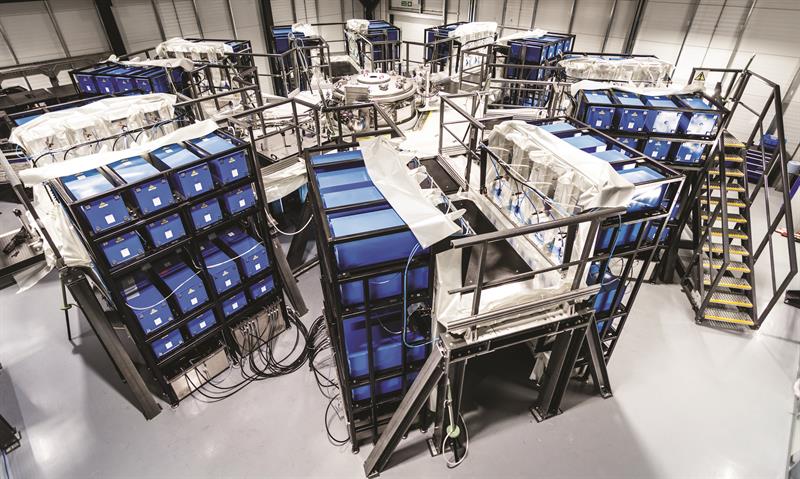
“We measure this with high-speed cameras, we’ve also taken X-ray images of the target to allow us to see what’s going on inside,” says Dr Hawker. “But we can also make quantitative density measurements, so we know not only the velocity but also the density of what’s happening inside the target.
“That’s a very long-winded way of saying we have lots of different bits of experimental evidence, our code matches all of them, but the proof in the pudding is actually getting to fusion. The code says we can do it, so we’ve got to do it.”
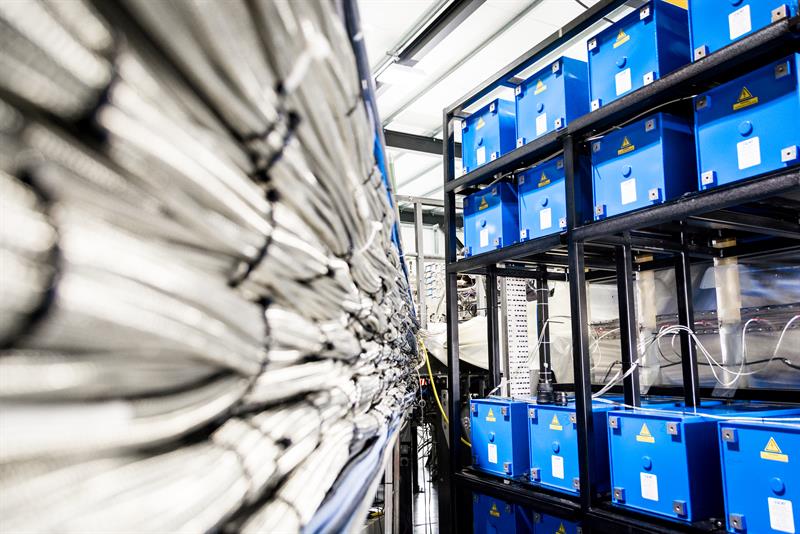
Machine 3 is made up of six banks of capacitors, the top ones positively charged, and the bottom ones negatively charged to ±100 kilovolts. When discharged, all the switches close within 50 nanoseconds and the current flows into a vacuum chamber where a projectile is fired like in a rail gun at one of the targets. The highest current Machine 3 has demonstrated so far is 13.3 mega Amps which is comparable to 500 simultaneous lightning strikes.
However, the NIF device cost $4 billion whereas Machine 3 cost £3.9m.
According to Dr Hawker, it’s more efficient too: “The shots we’re doing now are about 10% efficient from the stored electrical energy to projectile kinetic energy. The laser equivalent is stored electrical energy to laser light energy and that’s 0.1% efficient. So, it’s 100 times more efficient.”
This means, per joule of energy that reaches the target, Machine 3 is 1000 times cheaper.
A lot of data is being recorded and analysed from each shot, which means Machine 3 is averaging two and a half shots per week. The current the machine generates is recorded, as is the velocity of the projectile which includes high speed imaging and a velocity interferometer, which gives a 2D velocity profile of the front of the projectile to check if it is tilting. The pressure wave produced by the projectile hitting the target can also be measured, and finally there are neutron detectors and X-ray diagnostics. Dr Hawker says that they could be doing one shot a day without all these measurements, but they are essential to understand what is happening to refine the process.
“We have more to prove in terms of the science,” states Dr Hawker. “Fusion has never been demonstrated with projectile fusion before. We’ve actually torn apart and rebuilt the fundamental theoretical basis for inertial fusion to demonstrate that it is possible to get to gain from this process, and the simulations support that. But, if we do get the result, then we think our onward engineering is much much simpler.”
The magic number in terms of theoretically achieving continuous gain is one shot every five seconds. Machine 3 isn’t ready for that, but the First Light Fusion team has plans as to how it will achieve this: “Basically, what we want to do is fire the projectile straight down on top of the target through the same port. There are other examples of technology where high-powered electronics are working at those sorts of frequencies, radar for example – although it is relatively different.”
Essentially, the design of Machine 3 is similar to liquid metal fast breeder reactors that are used in the nuclear industry. Inside the reactor is a pool of liquid lithium which is pumped up to the top and falls in a cylindrical curtain around the ejector, through which the firing mechanism would drop the target and then fire the projectile at it. The collision will happen just above the surface of the pool, heating it from 250°C to 550°C. This is then recirculated through a separate loop to a heat exchanger, creating steam to drive a turbine, creating electricity.
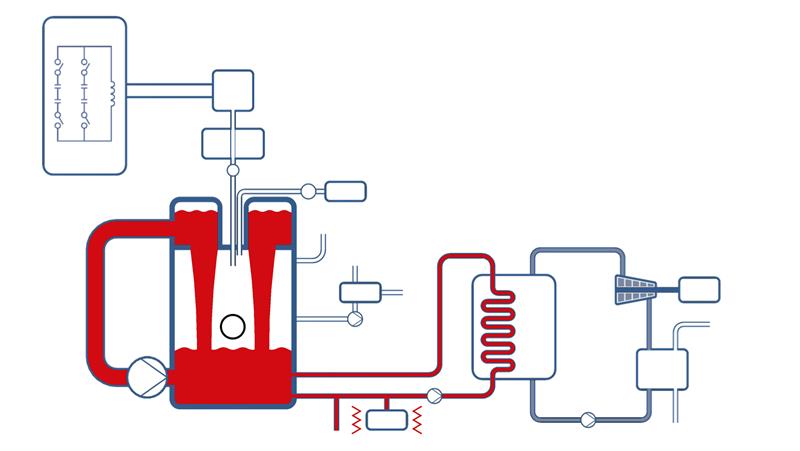
The reason for this liquid curtain is to avoid one of the biggest challenges of nuclear fusion; neutron damage to the reactor’s walls. Dr Hawker explains: “Four fifths of the energy comes out as neutrons and you need to catch them. The problem here is that the flux of neutrons causes all known structural materials to become brittle over time, they crash into the solid material and they disrupt its crystal structure and cause displacements and weaknesses to be formed, and it loses its structural integrity over time.”
In a power plant components can’t fail, so replacement cycles are short. In a tokamak, some of the components need to be replaced every one to three years. That’s a problem because this happens right in the very heart of the machine, meaning extensive and regular downtime.
“What we can do with projectile fusion is invert this paradigm,” Dr Hawker continues. “Instead of having the coolant behind the wall, we can have it inside the vessel. You can’t destroy the crystal structure of a liquid, so neutron damage for this part is not a question.
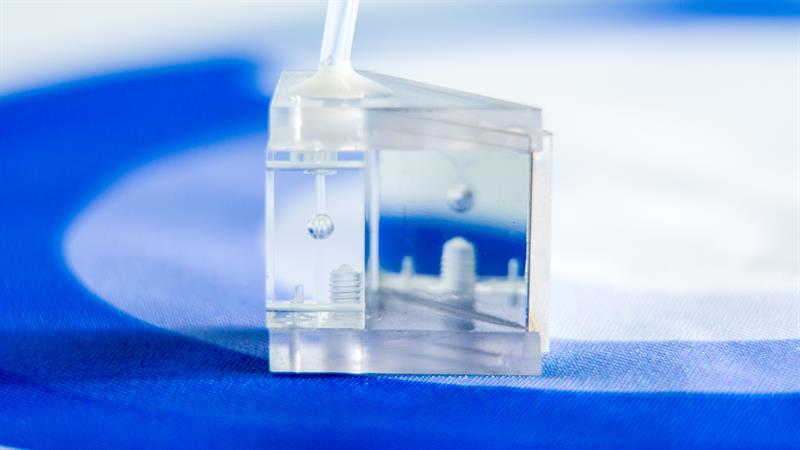
“We’ve done the calculations and it does massively reduce the neutron flux. There’s a metric called displacements per atom, which tells you about the radiation damage to materials and we can reduce it more than we need to, we could reduce it by a factor of 100 if we needed to, which basically takes the lifetime of this from two years up to more than the lifetime of a power plant. So, you might say we’ve gone too far.”
The problem isn’t completely avoided because the reactor head is sat above the reaction chamber, but this is a small component in comparison to the whole wall of the reactor. The idea is to put all components that would need to be regularly maintained and replaced inside the reactor head, including the projectile injector, the target injector and the vacuum system.
Despite all this innovation, research, development and testing, Machine 3 is still not powerful enough to achieve gain.
“There’s two ways to make pulsed power machines faster: more voltage, which is really expensive; or less inductance, which requires clever engineering optimisation. That’s
what we’ve done with Machine 3. When we designed Machine 3, we looked at what was the state of the art and with this architecture we’re actually beyond the state of the art. But we’ve built it now, so the state of the art has changed.”
First Light Fusion hopes to begin construction of Machine 4, The risk should be reduced as the company understands how Machine 3 works and has a validated simulation tool for the projectile.
Dr Hawker says that Machine 4 will be capable of gain, however, to get to a shot rate of one every five seconds, repeatably, will still take a lot of very hard work. But he has set a target of getting it done by 2024.
“It’s really hard to differentiate between different fusion technologies because it’s a deeply, deeply hard physics problem,” says Dr Hawker. “The one thing I’d say is we’re aiming to have a predictive simulation tool; I don’t think any other fusion project has a predictive simulation capability.
“If we have a predictive simulation capability, that really shows that we genuinely understand the physics that is taking place inside that target, and that is what ultimately gives me confidence that the core technology will work.”
As well as demonstrating gain in the next five years, First Light Fusion has partnered with the UK Atomic Energy Authority (UKAEA), a UK government research organisation responsible for the development of nuclear fusion power that has helped with some testing and will – Dr Hawker says – independently confirm the fusion demonstration, and with Mott McDonald who is working with FLF on a reactor vision based on the technology. Both these things are expected to happen within this year.

This is being seen as a rich source of IP, not just for First Light Fusion, but for its partners too as the company won’t manufacture reactors or build powerplants.
“IP for the power plant is not core to our strategy,” explains Dr Hawker. “We’re not daft, if we’ve got something we can patent we’re going to patent it, but our business opportunity is in designing, manufacturing and selling the targets. That will probably be something like one eighth of the total cost. The business opportunities for our partners in the supportive systems for the power plant is even bigger… and we think our opportunity is tens of billions a year.”
Machine 3 is on course to demonstrate fusion by the end of 2019 and will continue to be refined while Machine 4 is being constructed and set up. Dr Hawker envisages this project as an opportunity for the existing nuclear value chain to use all its existing skills and expertise to build a completely different and much more publicly acceptable technology.











